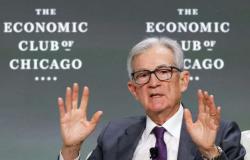The concerns grow as to the attraction of the dollar as a refuge value, according to a majority of foreign exchange strategists interviewed by Reuters, who provide that the global reserve currency will continue to depreciate during the coming year, against a background of fears of economic slowdown.
Since the return of President Donald Trump to the White House, the greenback has dropped almost 9 % against a basket of major currencies, the constant volatility of its pricing policies that have shaken the confidence of investors.
A 90 -day stay granted to his reciprocal prices on April 2 did not allow to restart the currency.
More than 55 % of respondents – 46 out of 83 interviewed between April 30 and May 6 – having agreed to answer an additional question, expressed doubts about the refuge value status of the dollar, against about a third during the April survey. However, most have recognized that no clear alternative existed at the moment.
“I am very worried,” says Steve Englander, global G10 FX research manager at Standard Chartered.
“It’s like a betrayal of a friend’s confidence. You can claim that it does not matter, or that it was not intentional, but your friend still remembers it. This is where the dollar is currently in terms of international trust. »»
“If you had asked me the question two months ago, I would have said that what matters to the dollar in the first place is the recovery, and that the financing – whether or not they have obtained revenue – would be secondary. From now on, it is clear that the markets are much more concerned with the long -term budgetary trajectory. »»
These concerns weigh heavily on the dollar in recent weeks. But the euro, currently at $ 1.13 and just behind its highest level for more than three years reached on April 18, should not record new increases by the end of the month or by the end of July, depending on the median forecasts of more than 70 analysts interviewed.
“We remain generally neutral in the short term on the Euro-Dollar pair. There is still a rebound margin for the dollar, because the Trump administration seems to go from a phase of threats and ads of heavy prices to a negotiation phase of trade agreements, “explains Francesco Pesole, strategist currencies at ING.
Almost 80 % of strategists – 47 out of 59 – expect a drop or stability in net sales positions on the dollar in the data from the Futures Futures Trading Commission (CFTC) by the end of May.
-The single currency should then appreciate $ 1.14 in six months and $ 1.16 in a year, according to the median of the survey – the highest revision of the monthly forecast over a year since November 2010.
The American economy contracted for the first time in three years in the last quarter, overwhelmed by an influx of imports while companies were looking to avoid the increase in costs linked to customs duties.
While the term markets anticipate three reductions in the federal reserve by the end of the year, monetary officials suggested that they were not in a hurry to reduce the rates immediately.
“We are more downgraded on the dollar for the second half. An increased awareness of the weakness of the American data, the effective start of rate drops by the Fed as provided for in the markets, a rotation outside American assets and the concerns around the independence of the Fed should return to the front of the stage, “analyzes Erik Nelson, macro strategist at Wells Fargo Securities.
Despite the repeated criticism of Donald Trump with regard to the president of Fed Jerome Powell, which he described as “really steep” while calling for a drop in rates, he said he did not want to dismiss him from his functions before the end of his mandate in May 2026.
“It all depends on the independence of the Fed. If the fear of a loss of independence from the Fed materializes, this would bring a serious blow to the status of value refuge of the dollar, “said Brian Rose, senior economist at UBS Global Wealth Management.
“We observe that the Japanese yen or the Swiss franc, which are in a way values of withdrawal, take advantage of the current situation. »»
The yen and the franc, both up almost 10 % since the start of the year, should further increase by 2.8 % and 0.4 % respectively over twelve months.
(Other articles from the May Reuters survey on the exchange market)








